What local ingredients can be used for fish feed in Ghana?
Facing high fish feed costs in Ghana? Wondering if a cheaper, local alternative exists? You're not alone, and the answer is closer than you think.
Yes, Ghanaian fish farmers can use readily available local ingredients like maize, soybean meal, cassava, and even innovative options like duckweed and black soldier fly larvae to create cost-effective fish feed.
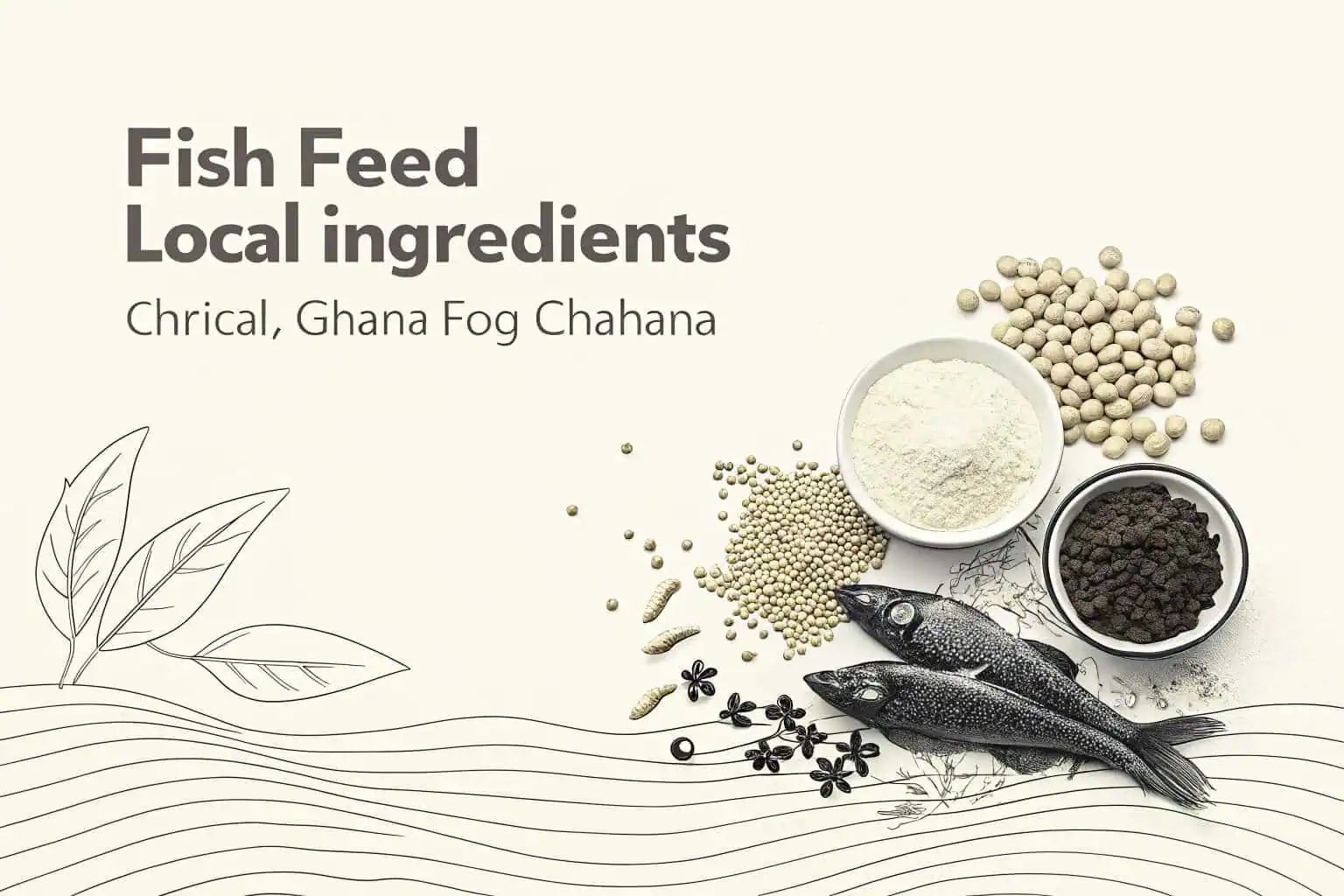
I've seen firsthand how crippling imported feed costs can be, sometimes eating up 70% of a farmer's budget. But there's a growing movement towards using what we have right here in Ghana. This shift isn't just about saving money; it's about building a more sustainable and resilient aquaculture industry for our future. Let's explore how we can make this happen.
What are the locally available fish feed ingredients?
Are you curious about what specific local items can power your fish farm? Finding the right ingredients locally can seem daunting, but many options are within reach.
Key local ingredients include maize, soybean meal, cassava, groundnut cake, and agricultural by-products like rice bran and wheat bran. Some farmers are also exploring duckweed and insect larvae.
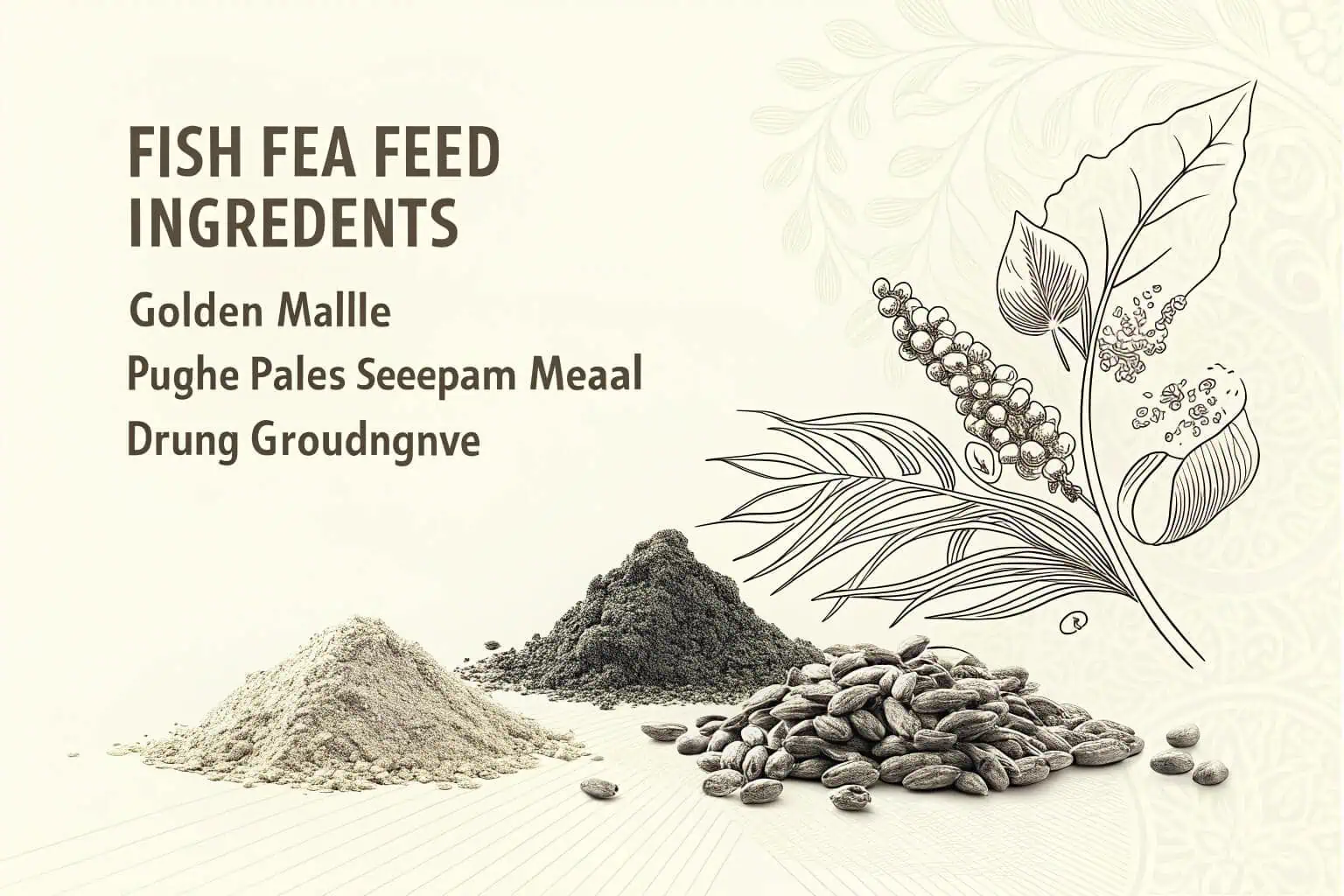
I've talked to many farmers across Ghana, and the excitement about local sourcing1 is real. It's a practical solution to a pressing problem. The government and several organizations are also stepping up, offering training and support. This collaborative effort2 is vital. When we look around, we find an abundance of resources. For instance, maize is a staple crop here, providing a good carbohydrate source. Soybean meal, rich in protein, is also increasingly cultivated. Cassava, another common crop, can be processed into a usable feed component. We also have by-products from milling rice and wheat that are often overlooked but can be very useful. The key is to understand their nutritional value3 and how to process them effectively. I believe that by sharing knowledge and supporting each other, we can unlock the full potential of these local treasures for our fish.
Common Grains and Tubers
Many readily available crops can form the base of your fish feed.
| Ingredient | Primary Nutrient | Availability Notes |
|---|---|---|
| Maize (Corn) | Carbohydrates4 | Widely grown in Ghana |
| Cassava | Carbohydrates | Abundant and affordable |
| Rice Bran | Fiber, Some Fat | By-product of milling |
Protein Sources
Protein is crucial for fish growth, and local options exist.
| Ingredient | Primary Nutrient | Availability Notes |
|---|---|---|
| Soybean Meal | Protein | Increasingly cultivated |
| Groundnut Cake | Protein, Fat | By-product of oil extraction |
| Fish Meal (local)5 | Protein | Can be made from non-commercial fish/bycatch |
Emerging & Innovative Ingredients
Forward-thinking farmers are exploring new, sustainable options.
| Ingredient | Primary Nutrient | Availability Notes |
|---|---|---|
| Duckweed | Protein, Vitamins | Fast-growing aquatic plant, easy to cultivate |
| Black Soldier Fly Larvae6 | Protein, Fat | Can be reared on organic waste, highly nutritious |
How to make local feed for fish?
Knowing the ingredients is one thing, but how do you actually turn them into usable fish feed? It might seem complex, but basic methods are accessible to most farmers.
Local fish feed can be made by grinding selected ingredients, mixing them in proper proportions to meet nutritional needs, adding a binder, and then pelletizing or sun-drying the mixture.
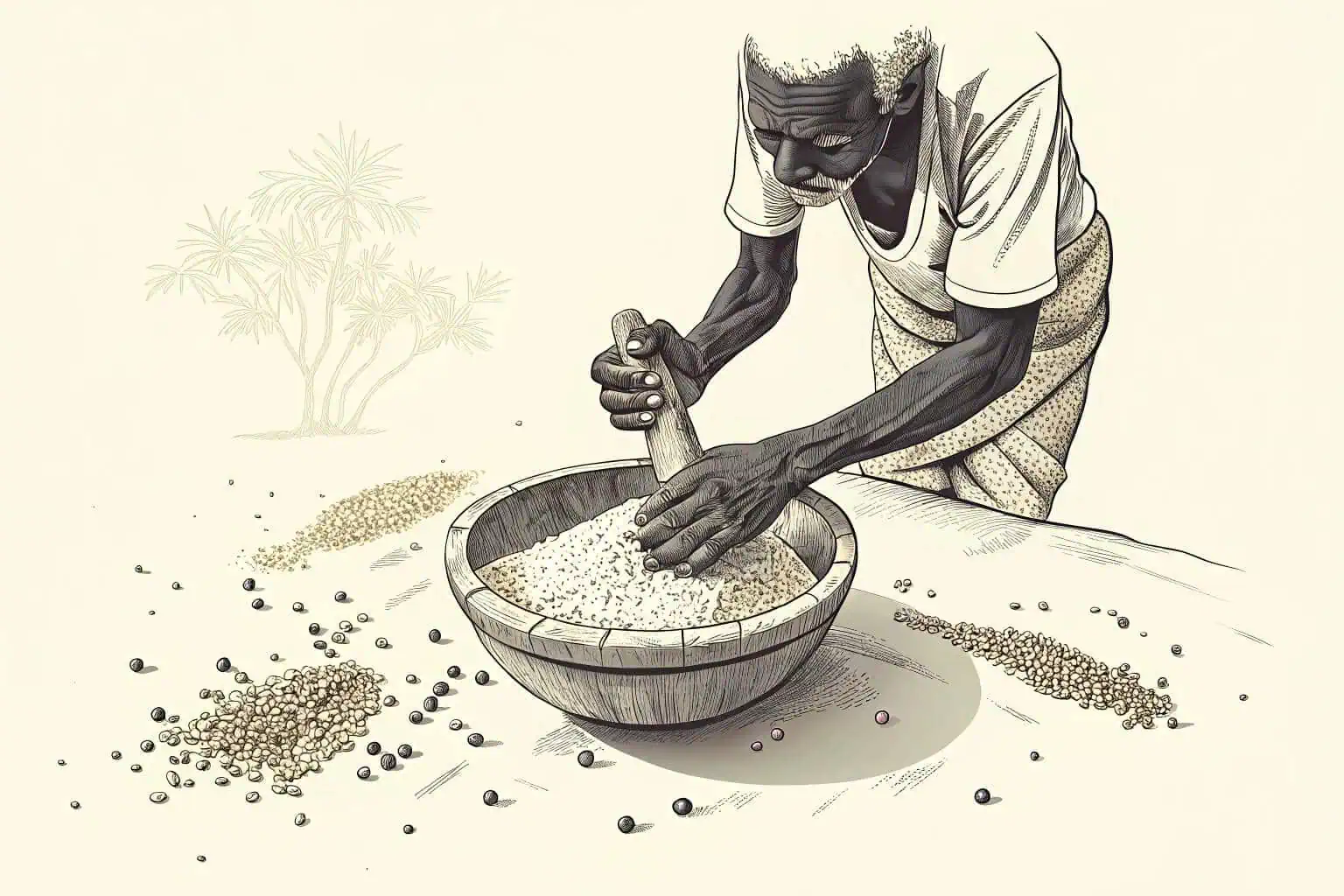
I've seen farmers start small, using manual grinders and simple mixing techniques. The process generally starts with sourcing your ingredients. Once you have them, they need to be processed. Grains like maize usually need to be ground into a powder. Cassava might need to be peeled, grated, and dried. After processing, you mix these ingredients based on a formulation. This formulation7 is key – it ensures the fish get the right balance of protein, carbohydrates, fats, vitamins, and minerals. You might need advice from an aquaculture extension officer8 or an experienced farmer to get this right. Once mixed, a binder like cassava starch or wheat flour is often added to help the pellets hold their shape. Then, the mixture can be passed through a pelletizer9, or simply shaped by hand and sun-dried. It's a hands-on process, but the savings and control it offers are significant. I always encourage farmers to start with a simple formula and gradually improve as they gain experience.
Step-by-Step Guide
Here's a basic breakdown of the process:
- Ingredient Selection & Sourcing10: Choose based on availability, cost, and nutritional value.
- Preparation & Grinding11: Clean and grind ingredients to a fine consistency.
- Formulation & Mixing: Combine ingredients according to a balanced formula.
- Binding & Pelletizing: Add a binder and form into pellets (manual or machine).
- Drying & Storage12: Sun-dry or use a dryer, then store in a cool, dry place.
Simple Formulation Example (General Purpose)
This is a very basic example and should be adapted based on fish species and local ingredient analysis.
| Ingredient | Percentage (%) |
|---|---|
| Maize Meal | 40 |
| Soybean Meal | 30 |
| Rice Bran | 20 |
| Groundnut Cake | 8 |
| Vitamin Premix | 1 |
| Binder (e.g., cassava flour) | 1 |
Key Considerations
- Nutritional Balance13: Ensure the feed meets the specific dietary requirements of your fish species (e.g., tilapia, catfish).
- Ingredient Quality14: Use fresh, uncontaminated ingredients.
- Particle Size: Pellets should be appropriate for the size of your fish.
- Storage15: Proper drying and storage prevent mold and spoilage.
What is an alternative to fish feed?
Beyond making your own compound feed, are there other ways to nourish your fish using local resources? Sometimes, a complete feed isn't the only answer.
Alternatives include integrated farming systems (like rice-fish or poultry-fish farming where waste products provide nutrients), and direct feeding of items like duckweed or leftover food (with caution).
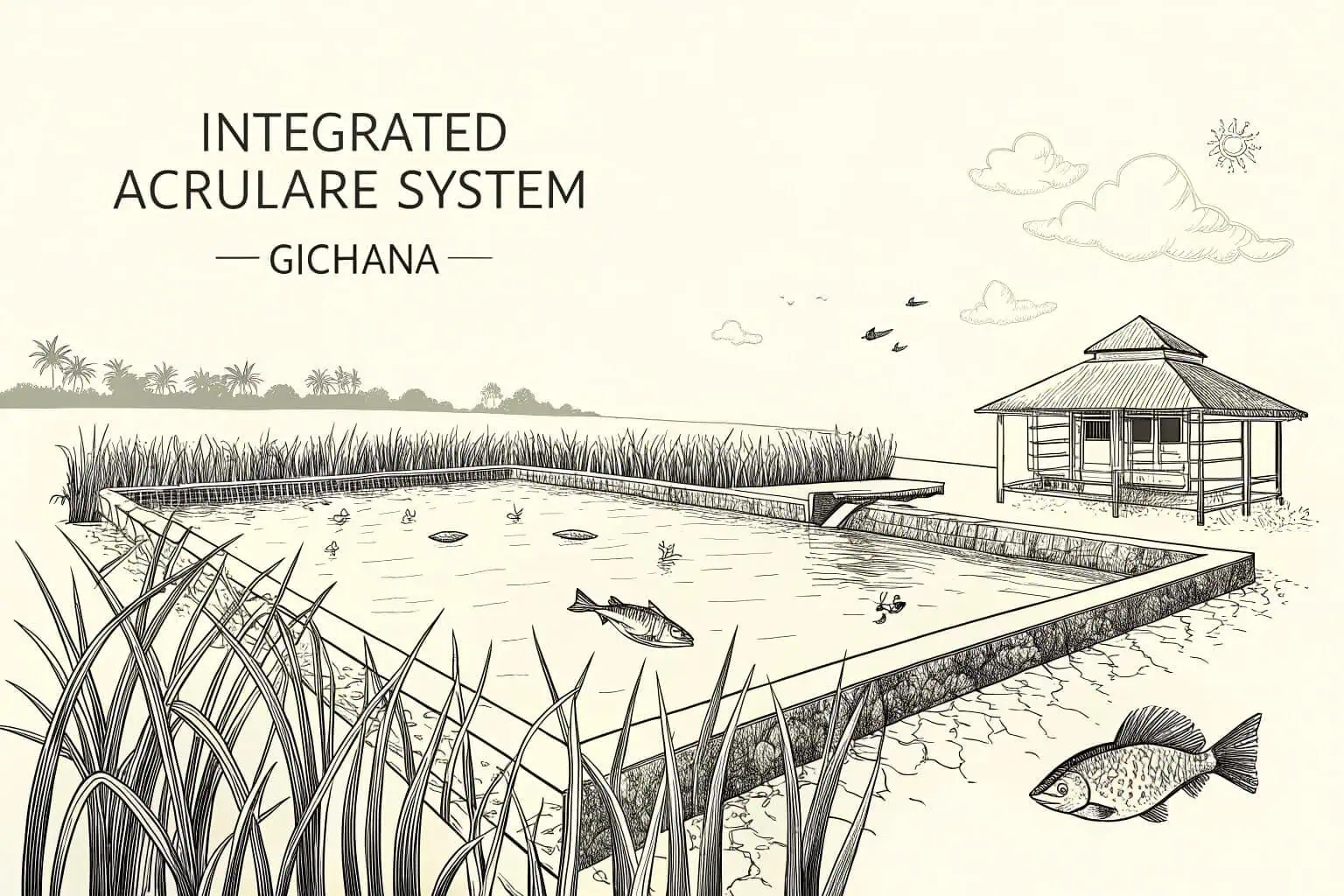
I'm a big believer in looking at the whole farm system. For example, in a rice-fish system, the fish can feed on insects and algae that grow in the rice paddy, and their waste can fertilize the rice. It's a win-win. Similarly, integrating poultry farming with aquaculture16 allows poultry droppings (properly processed) to fertilize the pond, stimulating natural food production for the fish. Some farmers also cultivate duckweed separately and feed it directly to their tilapia, which are herbivores. While these methods might not always provide all the nutrients for intensive farming, they can significantly supplement commercial or homemade feeds, reducing overall costs. It's about being resourceful and understanding the natural food web in your pond. However, one must be careful with direct feeding of unprocessed leftovers to avoid water pollution and disease.
Integrated Aquaculture Systems
These systems leverage natural synergies:
- Rice-Fish Farming17: Fish control pests and weeds in rice paddies, while their waste fertilizes the rice. Fish feed on natural organisms in the paddy.
- Poultry-Fish Farming18: Poultry manure fertilizes the pond, promoting algae and zooplankton growth, which fish consume.
- Pig-Fish Farming19: Similar to poultry-fish, pig manure (after proper treatment) can enhance natural pond productivity.
Direct Feeding of Natural Foods
Certain natural items can be fed directly:
- Duckweed: A highly nutritious aquatic plant that many fish species (especially tilapia) readily consume.
- Azolla: Another floating fern, rich in protein, that can be cultivated and fed to fish.
- Agricultural By-products20: Items like cassava leaves or sweet potato vines can be used, depending on the fish species.
Considerations for Alternatives
- Nutritional Completeness21: These alternatives may not always provide a complete and balanced diet for optimal growth, especially in intensive systems. They are often best used as supplements.
- Water Quality Management: Care must be taken to avoid over-fertilization or introduction of pollutants when using waste products.
- Suitability for Fish Species: Not all fish species will thrive on these alternative food sources.
What are the ingredients for making fish feed?
So, you're ready to start making your own feed, but what exactly goes into a balanced fish diet? Understanding the core components is crucial for success.
Key ingredients include a carbohydrate source (like maize or cassava), a protein source (like soybean meal or fish meal), fats/oils, vitamins, and minerals. Binders are also used.
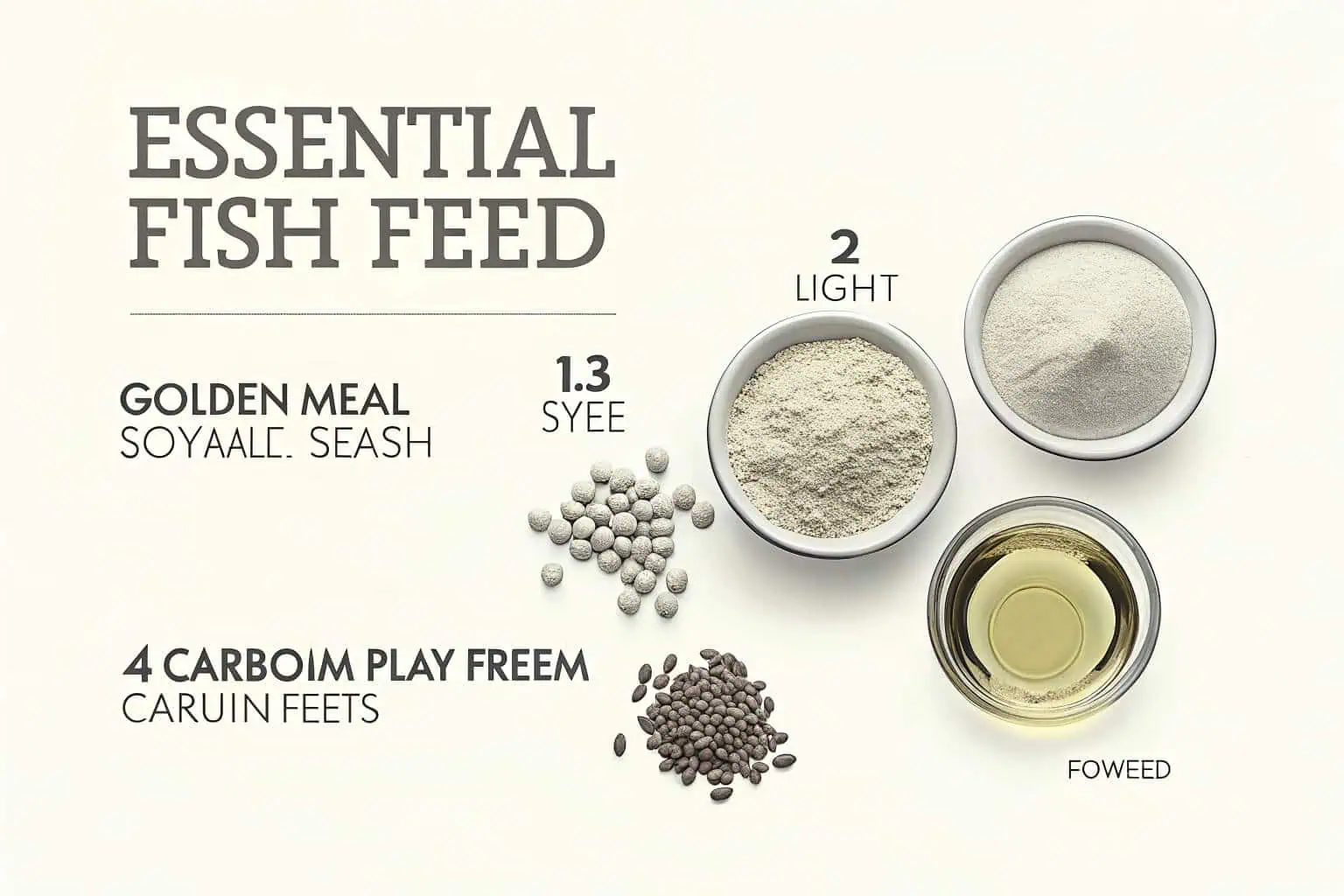
From my experience, the foundation of any good fish feed lies in balancing these core components. Think of it like building a house; you need a strong foundation and the right materials. Carbohydrates provide energy. Proteins are essential for growth and repair of tissues. Fats are a concentrated energy source and help with the absorption of certain vitamins. Vitamins and minerals, though needed in smaller amounts, are vital for various bodily functions and disease resistance. In Ghana, maize and cassava are common carbohydrate sources. For protein, soybean meal is a popular choice, and some farmers also use locally made fish meal (from non-commercial fish or processing waste) or groundnut cake. Palm oil can be a source of fat. You'll also need a vitamin and mineral premix22, which can usually be bought from agro-input dealers. Finally, a binder like cassava flour or wheat flour helps hold the pellets together. Getting the proportions right is the art and science of feed making.
Macronutrients
These form the bulk of the feed:
| Nutrient | Purpose | Common Local Sources |
|---|---|---|
| Carbohydrates | Energy | Maize, cassava, rice bran, wheat bran |
| Proteins23 | Growth, tissue repair | Soybean meal, groundnut cake, fish meal |
| Fats (Lipids) | Concentrated energy, essential fatty acids | Palm oil, fish oil, oilseed cakes |
Micronutrients
Needed in smaller quantities but essential:
| Nutrient | Purpose | Common Sources |
|---|---|---|
| Vitamins | Metabolic processes, immune function | Vitamin premixes, some natural ingredients |
| Minerals | Bone formation, enzyme function, osmoregulation | Mineral premixes, fish meal, bone meal |
Other Components
These play supporting roles:
| Component | Purpose | Common Sources |
|---|---|---|
| Binders | Hold pellets together, improve water stability | Cassava flour, wheat flour, bentonite |
| Attractants | Enhance palatability (optional) | Fish solubles, molasses |
Conclusion
Using local ingredients for fish feed in Ghana is a viable and beneficial path. It reduces costs, supports local agriculture, and promotes sustainable aquaculture for a brighter future.
-
Exploring this resource will provide insights into how local sourcing can enhance agricultural practices and community support. ↩
-
Discovering successful collaborations can inspire new initiatives and partnerships in agriculture, enhancing local farming communities. ↩
-
Understanding nutritional value is crucial for optimizing feed; this link will guide you on evaluating by-products effectively. ↩
-
Understanding the benefits of carbohydrates can help you make informed dietary choices for better health. ↩
-
Discover the process of making Fish Meal from local fish and its nutritional benefits, especially for protein intake. ↩
-
Discover how Black Soldier Fly Larvae contribute to sustainable agriculture and waste management. ↩
-
Exploring best practices in feed formulation can enhance the nutritional value of fish feed, leading to healthier fish and better yields. ↩
-
Understanding the role of an aquaculture extension officer can provide valuable insights and guidance for farmers looking to improve their practices. ↩
-
Learning about pelletizers can help farmers optimize their feed production process, ensuring better quality and efficiency. ↩
-
Explore this link to learn effective strategies for selecting and sourcing ingredients that enhance quality and cost-effectiveness. ↩
-
Discover techniques for preparing and grinding ingredients to achieve the best texture and flavor in your recipes. ↩
-
Learn about effective drying and storage methods to preserve the quality and longevity of your ingredients. ↩
-
Understanding the dietary needs of your fish species is crucial for their health and growth. Explore this link for detailed insights. ↩
-
Using high-quality ingredients is essential for optimal fish health. This resource will guide you in selecting the best ingredients. ↩
-
Proper storage techniques can prevent spoilage and ensure feed quality. Learn effective storage methods to maintain your fish feed. ↩
-
Learn about the integration of poultry and aquaculture to discover innovative ways to enhance farm productivity and sustainability. ↩
-
Explore the advantages of Rice-Fish Farming, a sustainable practice that enhances rice production and pest control. ↩
-
Learn how Poultry-Fish Farming utilizes poultry manure to boost fish growth and pond productivity. ↩
-
Discover the benefits of Pig-Fish Farming, a method that improves pond productivity through pig manure. ↩
-
Discover various agricultural by-products that can enhance fish nutrition and promote sustainable farming practices. ↩
-
Understanding nutritional completeness is crucial for ensuring optimal growth in fish, making this resource invaluable for aquaculture enthusiasts. ↩
-
Discover the significance of vitamin and mineral premixes in fish nutrition and how they contribute to overall health. ↩
-
Proteins are vital for body functions. Discover their role in growth and repair by exploring this resource! ↩